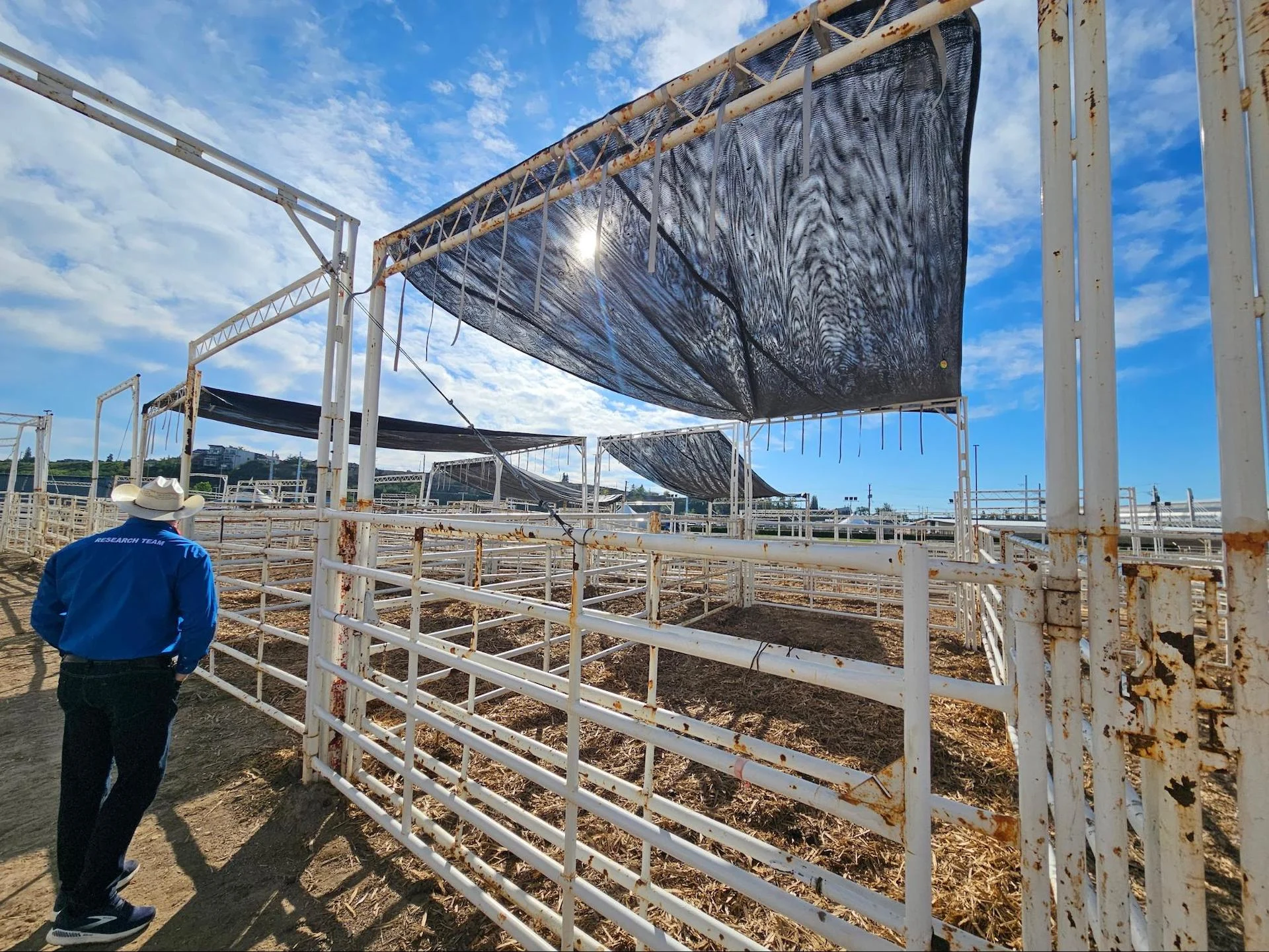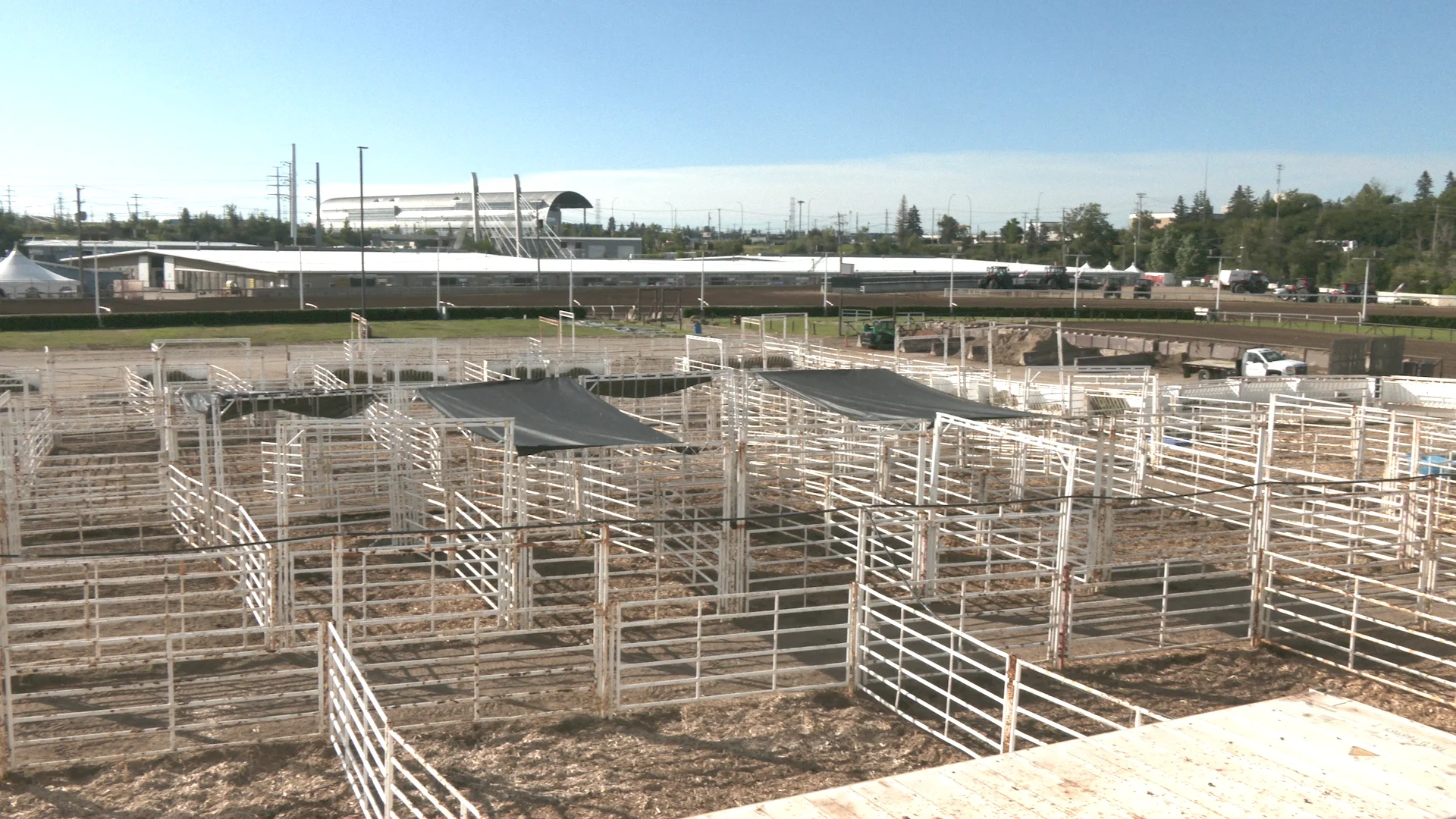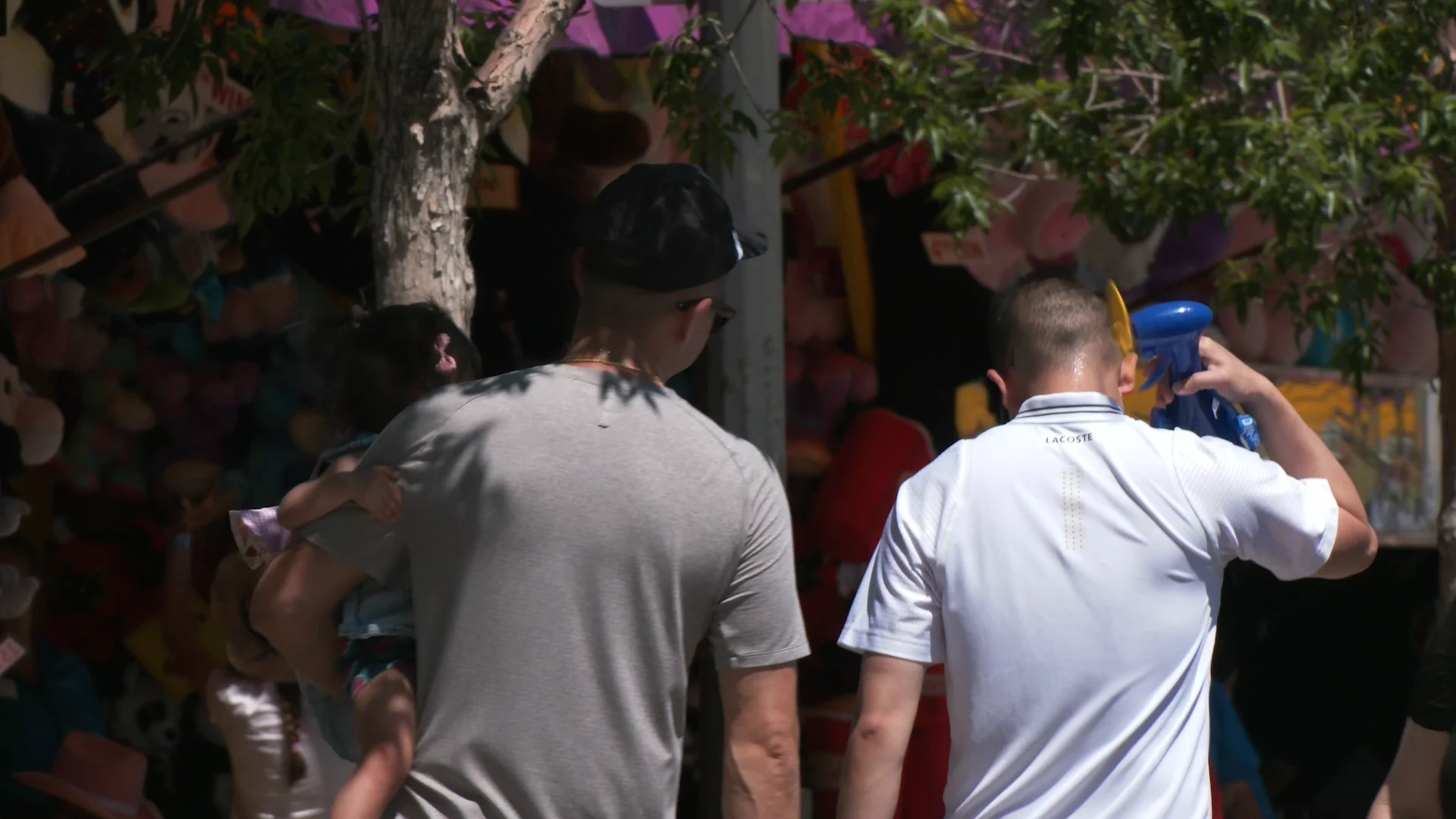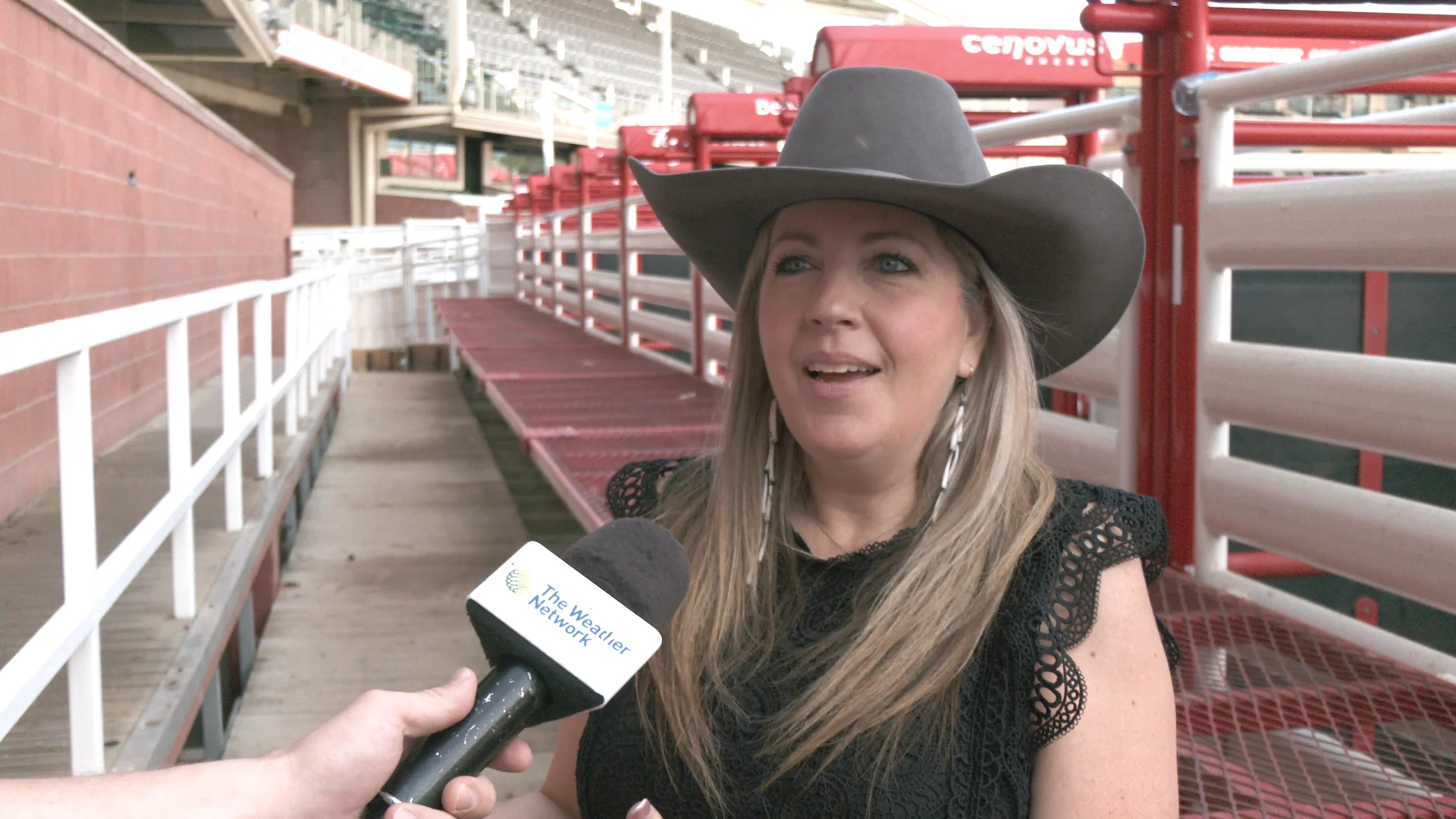
Stampede heat arrives in Calgary in time for rodeo research project
This research team is looking into rodeo animal health and how to mitigate heat stress at the Calgary Stampede. The Weather Network has more on the study.
While the summer heat may be making midway-goers sweat, it has Ed Pajor smiling.
The animal welfare professor at the University of Calgary is in the middle of a weather-related research project at the Calgary Stampede, and heat is part of the experiment. He and his colleagues are looking to determine the most efficient ways to cool off rodeo animals like horses and bulls.
SEE ALSO: Canada's 2025 wildfire season takes a break, but for how long?
“It’s a fantastic day for us, in terms of research. You can see the animals really do like to spend time in the shade,” Pajor said on Tuesday morning.
“Even the animals that aren’t even purposely shaded, if any creeps into their pen, they’re taking advantage of it.”
This year, Pajor’s team and the Calgary Stampede teamed up to install shaded curtains over a number of holding pens on the rodeo grounds.

Some of the holding pens on the Calgary Stampede grounds have been specially shaded this year, and equipped with temperature and humidity sensors. (Connor O'Donovan/The Weather Network)
And while it may seem obvious that shading animals will give them respite from the sun, Pajor says there’s more to the project than might meet the eye.
“It seems like a pretty straightforward question. ‘Does shade make the animals cooler or not?' But really it’s much more subtle than that. It’s really about how efficient the shade is,” Pajor explained.
“There’s lots of ways to cool animals.There’s shade, but also fans and mist. So this is kind of the first attempt to see how well this type of shade works for the animals.”
Both shaded and unshaded pens are being outfitted with sensors that will measure temperature and humidity. Ground temperature will also be recorded, as will the body temperatures of the animals being studied. All of this data will be analyzed alongside observations of animal behaviours like respiration rates, drooling and sweating.

Temperatures soared to above 30 C in Calgary on Tuesday. Higher temperature measurements can often be made on the Stampede grounds due to the large amount of pavement and the density of activity in the area. (Connor O'Donovan/The Weather Network)
Animal welfare is often under a microscope at the Calgary Stampede, which hosts more than 7,500 animals in various competitions, performances and exhibitions throughout the year. Animals have died during past events, many as a result of injuries suffered during competition.
Pajor notes that in his roughly 15 years working with the Stampede, he can’t recall a rodeo animal ever being deemed unfit to perform due to extreme heat. But, he adds that doesn’t mean that animal health and performance goes unaffected.
“It’s something we are paying a lot more attention to, and if we were to see animals we’re concerned about, we would bring it to the attention of the Calgary Stampede staff and the veterinarians on site. They would make the call on whether to pull the animal or not.”

Kristina Barnes says the Calgary Stampede’s “athletes," its bucking horses and bulls, spend a limited amount of time exposed to the elements on event days. When not performing, they’re brought into barns or sent to ranches outside of the city. (Connor O'Donovan/The Weather Network)
Calgary Stampede's agriculture and western events director, Kristina Barnes, says the research project is the latest step in ongoing efforts to improve animal welfare practices.
“Science helps verify that what we are doing is working, and then it helps us make decisions for the future,” she says.
“We can think we know how animals are going to react on a hot day, but putting science behind it really helps us make the decisions to continue to improve animal care here at the Stampede, year-over-year.”
